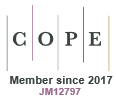Just Accepted
This article has been peer reviewed and accepted for publication. It is in production and has not been edited, so may differ from the final published form.
Review of thermal behaviour of firebrands and their role in fuel bed and structure ignition
Abstract
Firebrands or embers are a crucial phenomenon in wildfire behaviour. These firebrands, which are small, burning or smouldering pieces of wood or other flammable materials, can be carried by the wind over considerable distances, leading to the ignition of new fires far ahead of the main fire front. This process, called spotting, significantly contributes to the rapid spread of fires, particularly in wildland-urban interface (WUI) areas. The resulting spot fires pose a severe threat to people and properties. The challenges in managing and controlling fire spread arise from the ability of firebrands to travel long distances. A better understanding of the thermal behaviour of firebrands and their ability to ignite various natural fuel beds and structural materials is crucial for developing effective fire prevention and mitigation strategies. This paper presents a comprehensive review of recent studies investigating the thermal behaviour (temperature and heat flux) of firebrands and their interaction with natural and structural fuels. Over the past few decades, intensive research efforts have focused on predicting the behaviour of firebrands in spot fires through experimental studies, numerical simulations, and statistical modelling to identify factors influencing ignition likelihood.
WF25021 Accepted 23 April 2025
© CSIRO 2025



